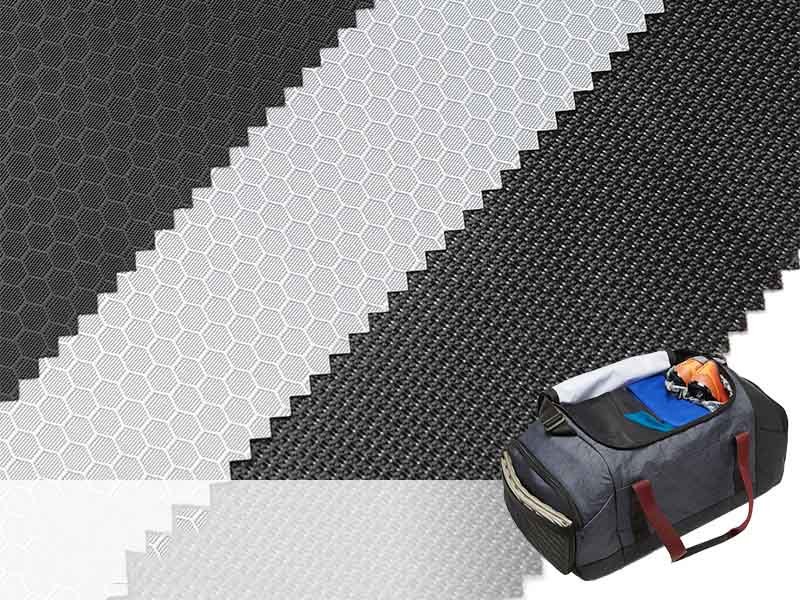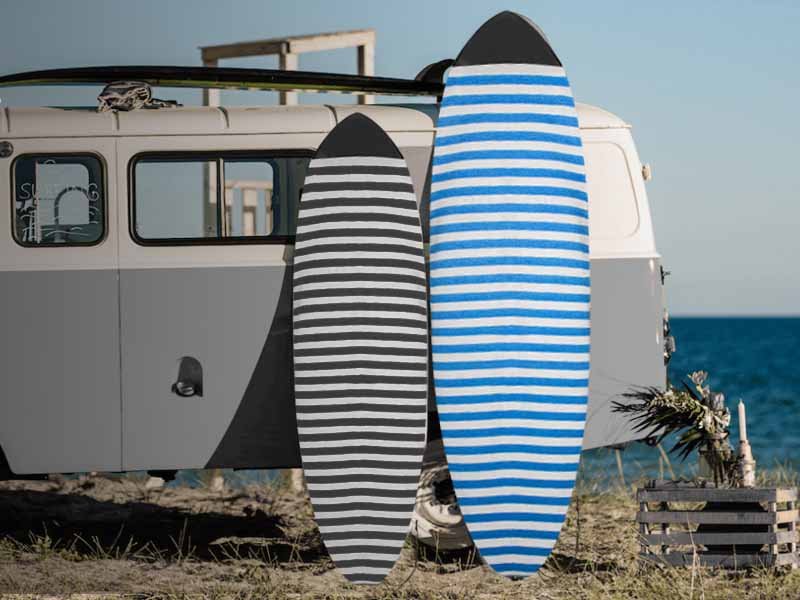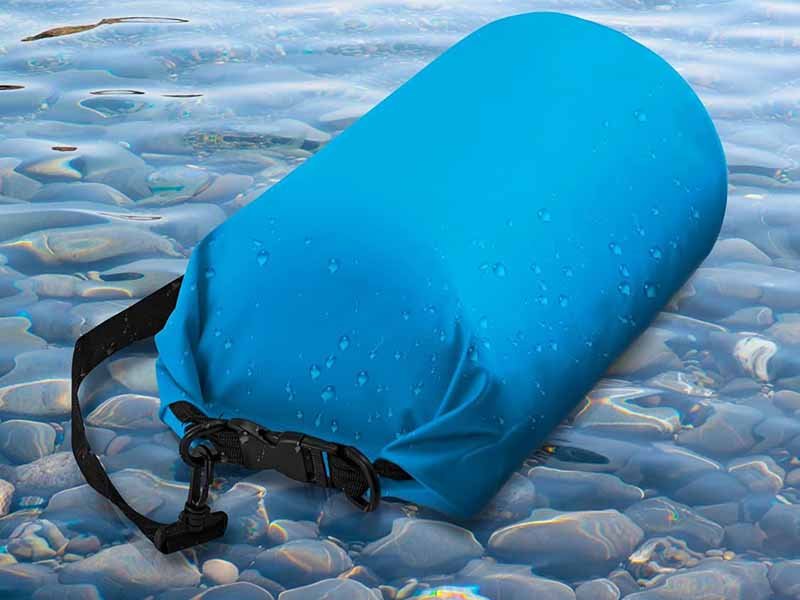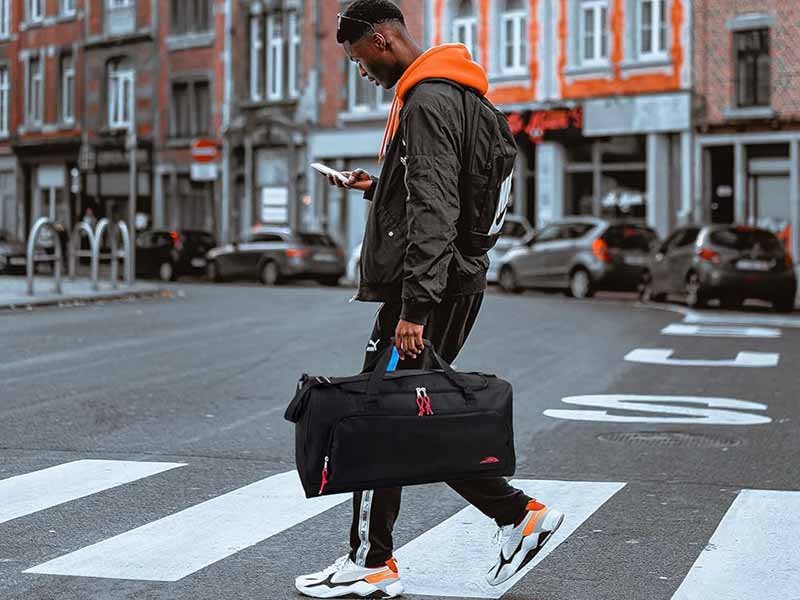In the vast world of bag manufacturing, the fabric you choose can mean the difference between a product that falls apart after a few uses and one that becomes a reliable companion for years. Whether you’re crafting a rugged backpack for outdoor adventures, a sleek tote for daily commuting, or a specialty cooler bag, selecting the right fabric dictates not only aesthetics but performance—abrasion resistance, water repellency, weight, and eco-credentials.
The ideal bag fabric balances tensile strength (denier rating), abrasion resistance, weight, water resistance (DWR or coating), and aesthetic appeal. For example, 1000D Cordura® nylon scores high on durability, while waxed cotton offers a vintage look with moderate water repellency. Eco-conscious brands may opt for RPET or organic canvas. Evaluating these factors against your bag’s end-use ensures long-lasting performance and customer satisfaction.
Imagine hiking a muddy trail with a trusty Cordura pack, the fabric shrugging off branches and rain alike, versus a cheap canvas sack that sags and tears after one season. In this guide, we’ll reveal the 18 best fabrics—natural, synthetic, technical, and recycled—and show you how to pick the perfect one for every bag design.
Which Natural Fibers Are Top Choices for Bags?
Natural fibers like canvas, linen, hemp, and jute remain go-to materials for bags thanks to their eco-credentials, tactile appeal, and solid performance. Canvas—once woven from hemp or linen and used for Renaissance paintings—is now mostly cotton-based, prized for strength and ease of dyeing. Linen lends a luxe, textured look; hemp and jute boast high tensile strength and sustainability. Choosing the right natural fiber balances durability, style, and your brand’s green story.
1、Cotton Canvas
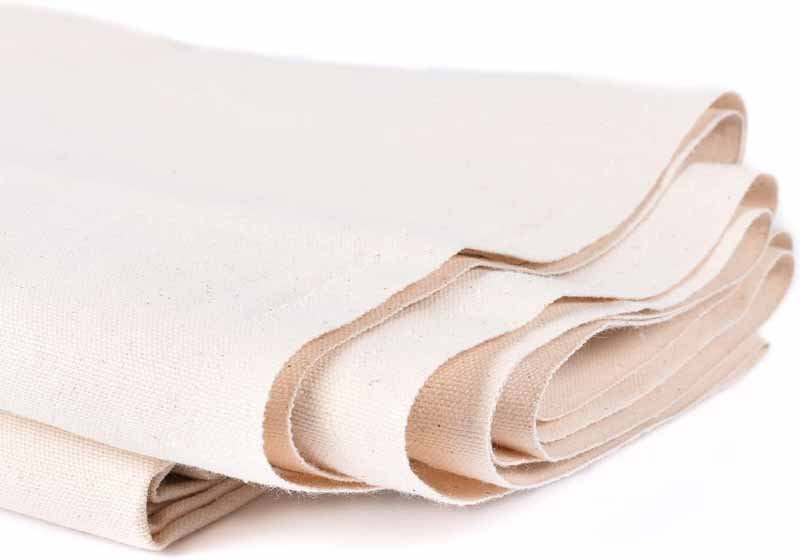
Cotton canvas is the tried-and-true workhorse of bag materials—a fabric you’ve almost certainly owned or used without even realizing it. Its story stretches back centuries: originally woven from hemp or linen (hence the Latin name cannabis), canvas was the go-to for Italian Renaissance painters who needed a sturdy, paint-holding surface. Later, postal services relied on heavy canvas mail sacks that could survive all weather conditions and countless tosses in sorting rooms. Fast forward to today, and canvas is usually cotton-based—softening with age yet standing up to daily wear and tear like a champ.
Why It Works
- Durability: Typical cotton canvas clocks in at 10–12 ounces per square yard. That translates into a tight, plain weave that resists snags, abrasion, and stretching. Canvas bags shrug off errands, gym visits, or weekend adventures without ripping at seams or thinning at the bottom.
- Customizable: Canvas is a dream for designers. You can dye it any color under the sun, screen-print complex graphics, or even apply wax coatings for a vintage look. That adaptability explains why brands from BAGGU (with its vibrant, packable totes) to Herschel Supply Co. (mixing canvas with leather accents) lean heavily on canvas.
- Eco-Friendly Vibe: Organic cotton canvas bags carry a strong sustainability story—grown without pesticides, spun with minimal chemicals, and completely biodegradable at life’s end. Pair that with fair-trade certifications, and you’ve got a fabric that speaks to conscious consumers.
Advantages
- Functional Strength: Weekend duffels and campus backpacks love canvas because they hold shape under hundreds of pounds of textbooks and gym gear.
- Water Resistance: A simple dip in beeswax or spray with a DWR finish beads off light rain, converting canvas into a quasi-outdoor material.
- Easy Repairs: Small rips or worn spots can be patched or reinforced with extra canvas or decorative stitching—no specialized tools needed.
Disadvantages
- Stain Magnet: Canvas soaks up coffee drips and ketchup splatters faster than you can say “Oops!” Keep a spot-clean kit handy, or opt for darker colors and patterned prints that disguise marks.
- Maintenance Routine: To keep your canvas looking crisp, you’ll want to brush off dust regularly, spot-wash with gentle soap, and re-wax once or twice a year if you’ve applied a protective coating.
- Casual Aesthetic: Canvas exudes a laid-back, utilitarian vibe. If you’re chasing a glossy, high-gloss finish or formal elegance, you might lean toward leather or silky synthetics instead.
Brands & Styles to Know
- L.L.Bean Boat and Tote: Legendary for a reason—laminated canvas bottom, reinforced handles, and decades of proven performance.
- Everlane The ReNew Transit: Eco-minded travelers love its recycled canvas and sleek, minimalist lines.
- BAGGU Standard Baggu: A lightweight, foldable canvas tote that packs into its own pocket—one of the world’s most sold bags.
- Herschel Little America Backpack: Combines canvas with PU-coated fabric and leather straps for that mountaineer-meets-metropolitan look.
Cotton canvas is your go-anywhere, do-anything fabric. It may lack the buttery patina of leather or the high-tech sheen of nylon, but nothing beats its combination of strength, eco-credentials, and pure, honest simplicity. If you need bags made to last, look good in the city or the country, and carry a story of craftsmanship, cotton canvas should be at the top of your material list.
2、Linen
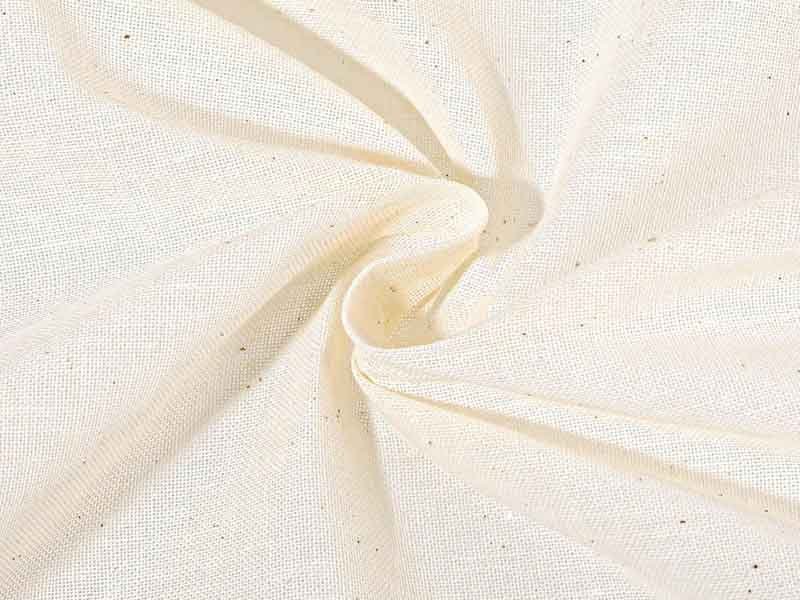
Linen isn’t your everyday bag material, but it brings a unique blend of elegance, breathability, and eco-credentials that no synthetic can match. Harvested from the flax plant—one of humanity’s oldest textile sources—linen’s lightly slubby texture and natural matte sheen give any accessory a relaxed, upscale patina. Historically, linen has clothed kings and draped altars, but in the bag world, it’s prized for casual luxury and warm-weather style.
What Makes Linen Special
- Natural Texture: Those characteristic slubs—tiny thick spots—create an organic, handcrafted look. No two linen bags are identical; each has its own fingerprint of texture.
- Breathability: Linen fibers wick moisture and allow air circulation, making it ideal for beach totes, market bags, or summer cross-bodies that won’t lock in heat or humidity.
- Eco Footprint: Flax plants thrive with minimal water and few pesticides. Processing linen uses fewer chemicals than cotton, and the leftover flax straw often serves as livestock bedding or builder’s straw panels.
Performance & Practicalities
- Weight & Strength: At 8–10 ounces per square yard, linen sits between lightweight canvas and heavy twill. Its tensile strength is moderate (~15 newtons), and it tolerates about 800–900 abrasion cycles before showing wear. That’s enough for day-to-day carry but not hardcore trekking.
- Wrinkle Factor: Linen is notorious for crisp creases—think beach blanket meets crisp tablecloth. Many designers embrace this, calling it “casual elegance,” but if you need a sharp, structured look, consider blending linen with a sturdier base fabric.
- Color & Dye: Natural linen is a warm ecru. It still takes dye well (often in muted, earthy tones) but may require pre-shrinking to avoid unexpected size changes.
Advantages
- Soft Break-In: Move beyond stiff dull cotton—linen softens after the first few wears, molding itself to your lifestyle.
- Natural Antibacterial: Flax has inherent antimicrobial properties, keeping odors at bay in those sweaty summer months.
- Biodegradable & Renewable: When your linen bag finally retires, it returns to the earth with minimal impact.
Disadvantages
- Fading & Sun Damage: Prolonged UV exposure can bleach linen fibers. Rotate usage or store out of direct sun to preserve color.
- Structural Support Needed: A fully unlined linen bag will flop. Add interfacing or a cotton canvas lining for shape retention.
- High-End Price Tag: Artisanal, European-flax linens command premium prices—expect to pay more than twice the cost of canvas per yard.
Real-World Picks
- Cuyana Linen Tote: A minimalist icon—combined with reinforced straps and a small cotton lining, it balances form and function.
- Madewell Linen-Blend Backpack: Uses a blend of linen and cotton for added durability, with leather accents for contrast.
- Local Artisans: Many small makers on Etsy use hand-woven Belgian linen to craft limited-edition pouches and clutch bags.
If your brand story revolves around artisanal craft, slow fashion, or seasonal collections, linen offers a tactile storytelling tool. It’s not the hardcore endurance champ like canvas, nor the all-weather hero like coated nylon—but for warm-weather styles, eco-credentials, and laid-back sophistication, linen remains a top natural-fiber contender.
3、Jute & Hemp
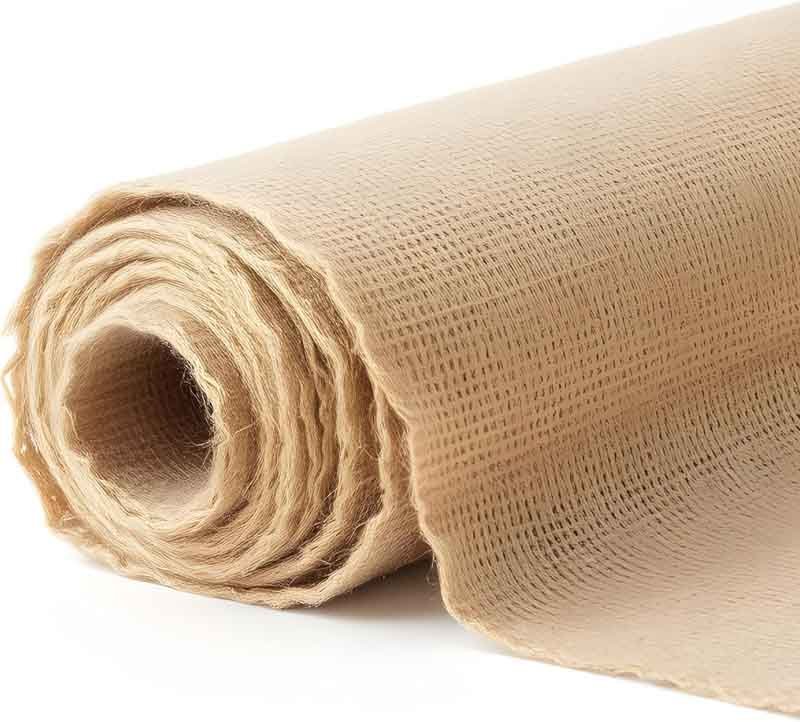
Jute and hemp stand at the forefront of sustainable bag materials—plants that grow in mere months without heavy irrigation or pesticides. They offer rugged textures and earth-first backstories that resonate with eco-aware consumers. Though often lumped together, jute and hemp serve slightly different niches: hemp parallels canvas in performance, while jute leans into rustic, decorative uses.
Hemp: The High-Performance Green Fiber
Origins & Sustainability
Hemp comes from Cannabis sativa, cousin to linen’s flax but cultivated for its fibers rather than psychoactive properties. Fields of hemp act as carbon sinks, absorbing CO₂ while building soft soils beneath.
Performance Metrics
- Weight & Feel: Roughly 8–12 oz per square yard; initial hand is coarse, but once washed and worn, it softens considerably.
- Strength: Boasts tensile strength around 25 newtons—outperforming most cotton canvases in tear tests.
- Abrasion: Holds up to about 1,000–1,200 Taber cycles, making it robust for daypacks and messenger totes.
Advantages
- Eco Champion: Hemp regenerates soil, needs negligible pesticides, and yields multiple harvests annually.
- Durable & Breathable: Its open weave wicks moisture, helping prevent mildew—handy for outdoor-oriented bags.
- Softening Over Time: Those stiff, industrial fibers break in to a comfortable, lived-in feel.
Disadvantages
- Rough Sisal Vibe: Without careful finishing or lining, hemp can feel scratchy against skin or device screens.
- Natural Variability: Color and texture vary harvest to harvest; some brands embrace that rustic look, others may find it inconsistent.
Applications
- Eco-market totes, farmer’s market bags, outdoor-style satchels.
- Brands like Patagonia and Tentree incorporate hemp blends in their sustainable gear lines.
Jute: The Burlap Boucle
Origins & Uses
Jute fiber, famous for burlap sacks, brings a coarse, almost rope-like feel. It was historically used for coffee bags, sandbags, and rustic upholstery—now it’s finding life in decorative pouches and artisanal totes.
Performance Metrics
- Weight & Texture: Around 10–12 oz; extremely coarse at first touch.
- Strength: Tensile strength near 18 newtons; adequate for light-duty uses.
- Abrasion: Approximately 900 Taber cycles—fine for occasional carry but not heavy load.
Advantages
- Distinct Aesthetic: That open-weave, natural-brown look screams “organic, handmade.”
- Carbon-Negative: Minimal inputs, quick growth—jute fields regenerate soil between crops.
Disadvantages
- Hand Comfort: Always needs a soft lining—think cotton twill or nylon taffeta.
- Limited Dye Options: Natural color palette dominates; bright, uniform dyes can look patchy.
Applications
- Rustic tote bags, planter carriers, limited-edition collaboration pieces.
- Etsy shops and zero-waste brands often highlight jute’s upcycled feel.
4、Leather (Natural)
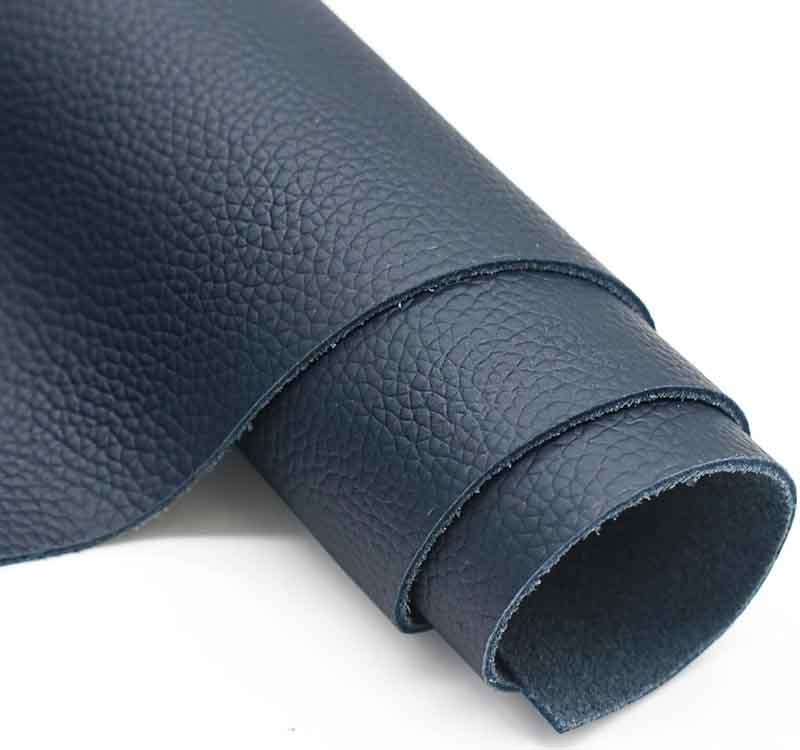
When we talk natural fibers, leather stands in a class of its own—animal-hide craftsmanship that interweaves centuries of tradition with modern luxury. From full-grain to top-grain varieties, leather offers unmatched durability, a living patina, and a premium tactile experience.
Full-Grain Leather: The Ultimate Classic
Full-grain leather is the unaltered top layer of the hide, preserving all its natural marks and surface texture. It’s the strongest, most breathable, and most characterful leather type.
Performance & Feel
- Strength: Tensile strength >30 newtons; it easily handles heavy contents and rough wear.
- Abrasion: Over 3,000 Taber cycles—leather satchels from decades ago often outlast their owners.
- Patina: Develops depth, richness, and a unique shine over years of use.
Advantages
- Heirloom Quality: Many leather bags become family hand-me-downs, with stories etched in every scratch.
- Luxurious Feel: Silky yet firm hand, reassuring weight, and that unmistakable “leather smell.”
- Repairable: Minor scratches buff out; professional leather services can re-dye or restitch for a fresh lease on life.
Disadvantages
- Cost & Weight: Expect 2–4× the price of canvas and a heavier carry.
- Maintenance: Needs regular conditioning and protection from prolonged moisture.
- Ethical Concerns: Some brands now seek plant-based alternatives or certified eco-tanning to address vegan critics.
Top-Grain Leather: The Polished Cousin
Top-grain leather is lightly sanded or buffed to remove surface imperfections, then refinished for consistency. It retains most of the strength of full-grain but offers a smoother canvas for painting or embossing.
Performance & Feel
- Strength: Around 25–28 newtons; slightly less rugged but still superb.
- Abrasion: ~2,500 Taber cycles.
- Appearance: Uniform color and texture; ideal for branded logos and foil stamping.
Advantages
- Consistent Look: Perfect for precision artwork, laser etching, and high-end finishes.
- Lightweight Alternative: Slightly thinner than full-grain, trimming a few ounces off the bag.
- Disadvantages
- Less Patina Depth: Ages gracefully but without the wild variations of full-grain.
- Processing Chemicals: The refinishing process can introduce small amounts of synthetics.
Applications Across Both Leathers
- Luxury Satchels & Briefcases: Tumi’s leather lines or Coach’s signature satchels.
- Heritage Backpacks: Filson’s leather-trimmed packs combine style with serious toughness.
- Artisan Clutches & Pouches: Hand-crafted brands on Kickstarter often showcase limited-run leather accessories.
Natural Fiber Comparison
| Fabric | Weight (oz/sq yd) | Tensile (N) | Abrasion (cycles) | Water Resistance |
|---|---|---|---|---|
| Canvas | 10–12 | 20 | 1,200 | Low (coatable) |
| Linen | 8–10 | 15 | 800 | None |
| Hemp | 8–12 | 25 | 1,000 | Low |
| Jute | 10–12 | 18 | 900 | None |
| Leather | 8–12 (1.2 mm) | 30+ | 3,000+ | None (treatable) |
Which Synthetic Fabrics Offer Superior Durability and Weatherproofing?
Synthetic stalwarts—Cordura® nylon, ripstop nylon, and polyester—dominate when toughness and water resistance are paramount. 1000D Cordura® offers 50% greater abrasion life than canvas, while ripstop variants prevent tear propagation. Polyester (600–900D) provides UV stability and cost savings. PVC-coated textiles and neoprene deliver full waterproofing. These synthetics excel in backpacks, travel bags, and technical gear where performance outweighs natural aesthetics.
Synthetic fabrics revolutionized bag manufacturing by delivering consistent performance, ease of maintenance, and advanced functional finishes. Let’s dissect the leading synthetic contenders:
5、Cordura® Nylon

When you think of indestructible backpacks or gear that laughs in the face of abrasions, you’re probably looking at Cordura® nylon. Developed by DuPont in the 1970s for military use, Cordura® introduced a level of ballistic-grade toughness previously unseen in textile applications. Today, it’s the gold standard for bags that must endure years of hard use—from commuter backpacks to expedition duffels.
Origins & Construction
Cordura® is a trademarked family of fabrics woven from high-tenacity nylon yarns. The most common variants for bag making are 500D, 750D, and 1000D—where “D” stands for denier, a unit measuring fiber thickness. A 1000D Cordura® weave feels substantial (around 6–7 oz per square yard), with a tightly packed, plain-weave structure that resists tearing and punctures. Many Cordura® fabrics also boast a proprietary DWR (durable water repellent) finish, causing water to bead and roll off.
Performance Profile
- Tensile Strength: Approximately 25–28 newtons, comfortably bearing heavy loads without the weave distorting.
- Abrasion Resistance: Over 1,800 Taber cycles before visible wear—50% more than typical polyester and double that of standard canvas.
- Puncture & Tear Resistance: High-modulus fibers and tight weave make it far more difficult for sharp objects to penetrate.
Why Cordura® Rocks
- Unmatched Durability: Gear that you bang against subway poles, drag over rough pavement, or throw into the bed of a truck will live to fight another day.
- Lightweight Strength: Compared to a similar-weight canvas, Cordura® offers superior tear strength with equal or less bulk.
- Colorfast & UV-Stable: Proprietary dye processes reduce fading, so your gear stays vibrant even after months outdoors.
Pros & Cons
| Advantages | Disadvantages |
|---|---|
| High Abrasion & Tear Resistance: Perfect for daily commuters, tactical packs, and heavy-duty duffels. | Higher Cost: Premium performance comes at a premium price—expect 20–40% more than generic nylon. |
| Water Repellent Finish: Beads water effectively; paired with taped seams, it approaches waterproof levels. | Stiff Hand Feel: Especially in heavier deniers, initial stiffness can hamper foldability and packability. |
| Low Maintenance: Quick wipe-down with a damp cloth keeps it looking fresh; no special conditioning needed. | No Real Patina: Unlike cotton canvas or leather, Cordura® doesn’t develop character over time—looks utilitarian. |
Applications & Brand Examples
- Backpacks: Mystery Ranch uses 500D and 1000D Cordura® in its tactical packs—trusted by search-and-rescue teams.
- Luggage: Eagle Creek’s Cargo Hauler Duffel deploys 1000D Cordura® for globetrotters needing abrasion-proof gear.
- Everyday Gear: Patagonia’s Black Hole line blends recycled Cordura® nylon with TPU coatings for extra water resistance.
Care & Maintenance
- Spot Cleaning: Mild soap and cold water; avoid harsh detergents that strip DWR finishes.
- Reproofing: After extended use, refresh the DWR with a spray-on or wash-in treatment to maintain water beading.
- Storage: Keep away from high heat to avoid softening or melting the synthetic fibers.
If your customers demand performance over panache—whether they’re hiking cross-country or hauling heavy camera rigs—Cordura® nylon is the fabric you reach for. Its technical pedigree from military roots to modern outdoor adventures makes it a tried-and-true stalwart in any bag-maker’s arsenal.
6、Ripstop Nylon
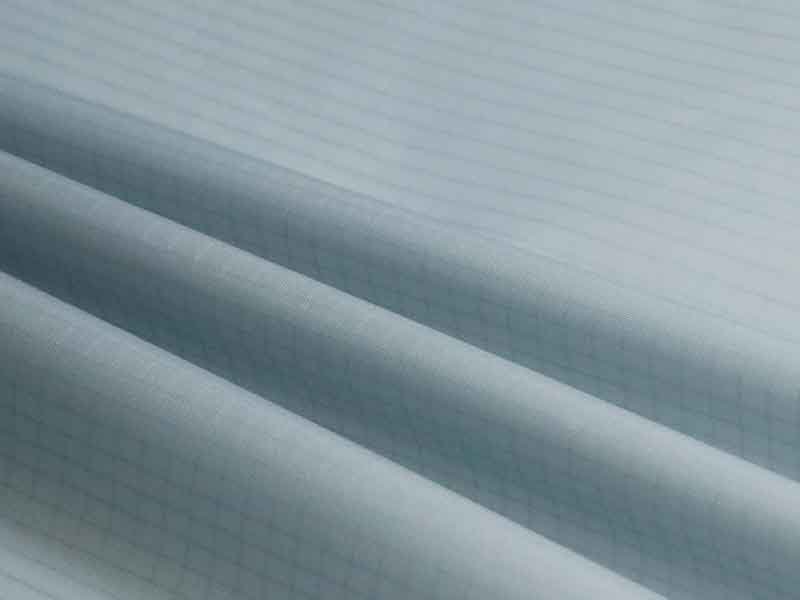
Imagine a fabric so light you can pack it into a tiny pouch but so tough it stops rips in their tracks. That’s ripstop nylon—a clever weave that embeds a grid of reinforcing threads to prevent small tears from ballooning into big holes. Originally developed for parachute harnesses in World War II, ripstop nylon has since parachuted into everyday gear: packable daypacks, ultralight travel bags, and emergency shelters.
Origins & Weave Structure
Ripstop refers less to the fiber and more to the weaving technique. Thin, high-tensile nylon threads are interwoven every 5–8 millimeters in a crosshatch pattern, creating tiny “reinforcement islands.” This structure means if a sharp edge cuts one yarn, it can’t easily propagate beyond the nearest reinforcement, effectively halting the tear.
Performance Profile
- Weight: Superlight—often between 1.5 and 3.5 ounces per square yard—making it ideal for ultralight applications.
- Tensile Strength: Roughly 18–22 newtons, enough for daily essentials or minimalist hiking gear.
- Abrasion Resistance: Around 1,200 Taber cycles—lower than heavy Cordura®, but still solid for light-to-moderate use.
Why Ripstop Shines
- Packability: Folds into a palm-sized stuff sack—perfect for travel pouches that expand into a full-size tote.
- Tear Prevention: That grid weave means no more helplessly watching a tiny snag grow into a gaping hole.
- Water-Resistant Options: Many ripstop nylons come DWR-coated, and some variants even feature a light PU laminate for near-waterproofing.
Pros & Cons
| Advantages | Disadvantages |
|---|---|
| Ultra-Lightweight: Ideal for accountants and adventurers who count every ounce. | Limited Abrasion Life: Not built for sliding across rough concrete or dragging through brambles. |
| High Tear-Stop Capability: Reinforced grid weave keeps small snags from spiraling. | No Thermal Insulation: Thin fabric doesn’t trap warmth—poor choice for insulated sleeves. |
| Affordable: Cheat-cost relative to Cordura®; you pay more for advanced weaves than the fiber itself. | Creative Prints Needed: Solid colors can look bland—brands often add patterns to boost visual appeal. |
Applications & Brand Examples
- Packable Daypacks: Sea to Summit Ultra-Sil daypacks collapse small and weigh under 100 grams.
- Stuff Sacks: Outdoor research uses ripstop nylon for gear sacks that stash wet clothes without leaking.
- Travel & Storage: REI’s pack-it cubes and travel organizers lean on ripstop for lightweight durability.
Care & Maintenance
- Gentle Wash: Use cold water and mild detergent; high temperatures break down DWR coatings.
- Air Dry: Avoid tumble-drying to preserve fiber integrity and maintain water repellency.
- Minor Repairs: Reinforce nicks with iron-on ripstop patches or tape specifically designed for synthetics.
Ripstop nylon is your go-to for featherlight gear that packs down to nothing yet stands up to accidental snags. It’s less about brute strength and more about intelligent reinforcement—perfect for brands emphasizing ultralight travel, emergency preparedness kits, or minimalist carry solutions.
7、Polyester
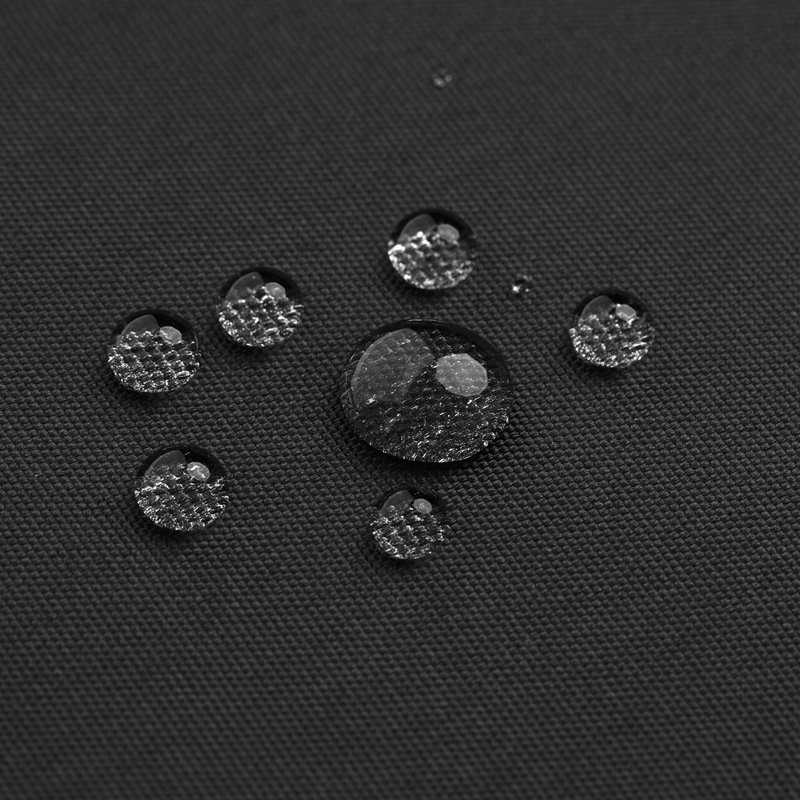
Polyester may not sound glamorous, but don’t let the generic name fool you: this versatile synthetic fiber underpins everything from budget backpacks to high-fashion totes. Renowned for color stability, UV resistance, and cost-effectiveness, polyester is the fabric equivalent of a reliable friend—always there, rarely complaining, and whipping up decent performance on demand.
Origins & Properties
Polyester—specifically polyethylene terephthalate (PET)—arose in the 1940s as a competitor to nylon. Its molecular structure delivers inherent hydrophobicity: water beads up rather than soaks in, making it less prone to mildew and mold than cotton. Polyester fabrics used in bags come in deniers ranging from 300D to 900D; the higher the number, the thicker and more abrasion-resistant the weave.
Performance Profile
- Tensile Strength: Approximately 18–24 newtons—close to ripstop nylon levels but usually with a softer hand.
- Abrasion Resistance: 1,200–1,500 Taber cycles, depending on denier and weave density.
- UV Stability: Polyester resists fading and degradation from prolonged sun exposure better than nylon, making it a go-to for outdoor gear.
Why Polyester Is Everywhere
- Cost-Effective: Raw-material costs run roughly 30–50% lower than nylon, translating into budget-friendly end products.
- Color Retention: Dye molecules bond tightly, so brilliant hues stay brilliant even after months of sunshine.
- Moisture Management: Naturally sheds water and dries quickly—no swampy, mildewy gear after a rainstorm.
Pros & Cons
| Advantages | Disadvantages |
|---|---|
| Affordable & Available: A staple for mass-market backpacks, school bags, and promotional totes. | Less Tough Than Nylon: Slightly lower abrasion resistance—edges and corners may fray faster under heavy use. |
| UV-Resistant: Fades less than nylon—great for sun-soaked environments or brightly colored designs. | Breathability Issues: Doesn’t wick moisture like natural fibers; internal condensation can occur in humid climates. |
| Easy Care: Machine-washable and quick-drying; no special treatments necessary for mildew resistance. | Oil & Stain Attraction: Greasy marks can cling stubbornly—spot-cleaning still required. |
Applications & Brand Examples
- Everyday Backpacks: Eastpak and Jansport rely on 600D polyester for budget-friendly, student-proof backpacks.
- Fashion Totes: Kate Spade and Michael Kors craft printed totes in smooth polyester sheens.
- Outdoor Gear: Columbia Sportswear uses 900D polyester in hiking packs—paired with waterproof coatings for storm-ready performance.
Care & Maintenance
- Machine Wash Gentle: Cold water, mild detergent; skip fabric softeners that can clog fibers.
- Air Dry or Tumble Low: High heat can shrink or warp synthetic fibers; air drying preserves shape.
- Refresh Water Repellency: Optional spray-in reproofers restore DWR finishes lost after repeated washes.
If your bag lineup needs to balance affordability with dependable everyday performance—and you want bold colors that don’t fade—polyester is your fabric of choice. It may lack the high-tech toughness of Cordura® or the natural appeal of canvas, but its UV stability, quick-dry properties, and wallet-friendly pricing make it a wardrobe staple across countless brands.
8、PVC-Coated & PU-Coated Textiles
When you need zero-compromise waterproofing and a wipe-clean surface, PVC-coated and PU-coated textiles step up to the plate. These fabrics marry a sturdy base cloth—usually polyester or nylon—with a plastic coating, creating a barrier so impermeable that spills bead up on the surface and grime can be wiped away in seconds. From cooler bags to industrial totes, coated textiles dominate applications where water, mud, and oils are constant threats.
How Coatings Work
- PVC Coating: Polyvinyl chloride is thermally laminated or calendared onto the textile backing, creating a film 0.5–2 mm thick. The result feels vinyl-like—stiff, glossy, and supremely waterproof.
- PU Coating: Polyurethane can be milled into a thinner, more flexible film (0.1–0.5 mm) or applied as a liquid finish that cures into a soft, rubbery layer. PU coatings tend to be lighter and more pliable than PVC.
Performance Profile
- Waterproof Rating: True waterproof—no water penetration under splashes, submersion, or pressurized spray.
- Abrasion Resistance: 1,500–2,000 Taber cycles on coated surface; base cloth often 600–1000D polyester or nylon.
- Chemical Resistance: Resilient against oils, solvents, and many chemicals—ideal for tool bags, mechanical equipment covers, and medical carts.
Why Brands Choose Coated Textiles
- Zero Absorption: No need for DWR reproofing—coating blocks water, oils, and stains outright.
- Hygiene & Cleanup: Hospitals and labs favor PU-coated fabrics for their ability to withstand regular disinfectant wipes.
- Structural Integrity: Coating adds body/stiffness, helping bags hold shape without internal frames.
Pros & Cons
| Advantages | Disadvantages |
|---|---|
| 100% Waterproof Protection: Rain, sweat, spills—you name it, it beads right off. | Heavier & Bulkier: Coatings add significant weight and reduce foldability. |
| Wipe-Clean Surface: Perfect for food delivery, medical pouches, or outdoor gear that gets filthy fast. | Breathability Zero: No air exchange—internal condensation can build up in humid climates. |
| Industrial Durability: Stand up to chemicals, oils, and UV exposure with minimal degradation. | Less “Soft” Feel: The plastic surface lacks the warmth of textiles or natural fibers. |
Applications & Brand Examples
- Cooler Bags: YETI and Igloo use 0.8–1.2 mm TPU-coated polyester for leakproof performance.
- Dry Bags: Sea to Summit and SealLine deploy PU or PVC coatings on ripstop nylon for kayak-ready gear.
- Utility & Tool Bags: Dewalt and Milwaukee partner with coated textiles for tool rolls and workshop carts.
Care & Maintenance
- Wipe Down: Mild soap solution and soft cloth; avoid abrasive brushes that can scratch coating.
- Avoid Folding Stress: Repeated creasing can cause micro-cracks in PVC; roll or loosely fold whenever possible.
- Repair Kits: Small tears can be patched with adhesive-backed coated fabric patches supplied by fabric mills.
For gear that must stay dry, clean, and structurally sound under the harshest conditions, PVC- and PU-coated textiles deliver unbeatable protection. The trade-off in weight and breathability is well worth it when your application demands leak-proof security and instant wipe-down maintenance.
9、Neoprene
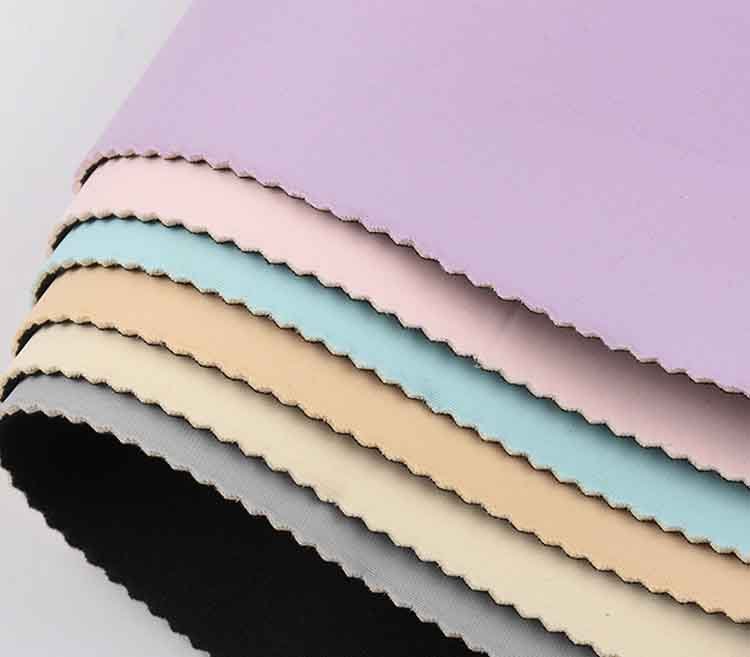
Neoprene—the same stretchy, water-resistant fabric used in wetsuits—brings its unique set of advantages to bag making. With a closed-cell foam core sandwiched between knit or laminated face fabrics, neoprene offers shock absorption, thermal insulation, and a surprisingly plush feel. Think laptop sleeves that cushion drops or cooler pouches that keep drinks icy longer—all in a material that flexes without cracking.
Origins & Structure
Invented by DuPont in 1931, neoprene is a synthetic rubber known as polychloroprene. In bag applications, a typical neoprene panel is 2–4 mm thick: a core of open or closed-cell foam bonded to nylon or polyester jersey facings. The result is a soft, springy fabric that snaps back after stretching.
Performance Profile
- Impact Resistance: Foam core disperses shock—ideal for protecting electronics or glass bottles.
- Insulation: Neoprene’s closed cells trap air, providing thermal barriers that keep contents cool or warm.
- Water Resistance: Naturally hydrophobic, neoprene won’t soak up water—great for poolside pouches or wet wetsuit storage.
Why Neoprene Appeals
- Cushy Comfort: A neoprene sleeve feels like carrying a pillow—perfect for delicate gadgets.
- Seamless Designs: Panels bond without bulky seams, creating sleek silhouettes.
- Stretch & Snap-Back: Bags expand to fit odd shapes (like large water bottles) and return to form when empty.
Pros & Cons
| Advantages | Disadvantages |
|---|---|
| Impact & Thermal Shield: Cushions laptops, phones, and snacks alike. | Bulk & Weight: Thick neoprene adds heft—you’ll feel it on longer carries. |
| Waterproof & Wipe-Clean: Perfect for lunch bags, cooler totes, and beach essentials. | Heat Sensitivity: High heat (like in a car trunk) can deform the foam core over time. |
| Seamless Aesthetic: Smooth cuts and bonded edges look sleek without visible stitching. | Cost Factor: More expensive per yard than many synthetics—expect a premium price point. |
Applications & Brand Examples
- Laptop Sleeves: Bellroy and Incase offer neoprene-lined sleeves that double as drop protection.
- Cooler Pouches: YETI’s Rambler Pouch uses neoprene-like foam for insulating snacks.
- Drink Holders: Corkcicle’s neoprene canteens slip into a neoprene carrier with handle for comfort.
Care & Maintenance
- Hand Wash Only: Gentle soap and cold water; avoid machine agitation that stresses foam layers.
- Air Dry Flat: Maintain shape and prevent delamination of facings.
- Avoid Sunscreen & Oils: Certain chemicals can break down neoprene over time.
Neoprene is a natural choice when your bag needs to double as armor and insulation—think gadget sleeves, cooler bags, or protective pouches. Its unique combo of cushioning, temperature control, and sleek construction makes it a go-to for brands that blend function with a touch of sporty luxury.
Which Technical & Specialty Fabrics Suit Niche Bag Types?
For specialized applications, use ballistic nylon (military-grade strength), sailcloth (UV-resistant polymer laminates), waxed cotton (vintage water repellency), and fire-retardant textiles (UL94-rated). UV-stabilized fabrics prevent sun degradation. These niche materials ensure your tool bags, fireproof and outdoor bags excel in their specific environments.
Some bag categories demand niche fabrics engineered for extreme conditions or regulations. Understanding their unique properties is critical to designing fit-for-purpose gear.
10、Ballistic Nylon
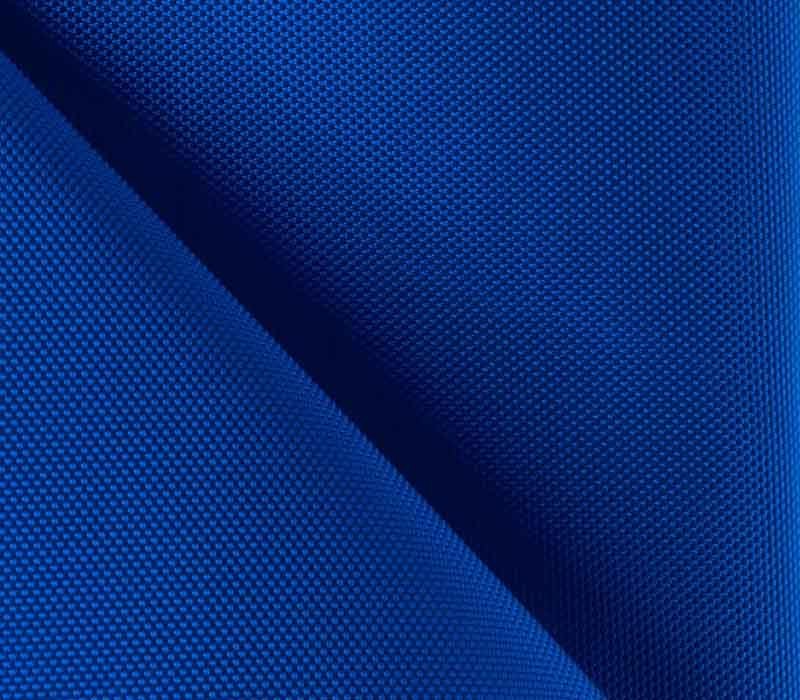
If you’ve ever admired the rugged look of a military-style duffel or the reassuring heft of a bomb-proof briefcase, you’ve likely encountered ballistic nylon. Born in World War II to protect Allied pilots from flying debris, this heavyweight, tight-weave nylon fabric has since become synonymous with uncompromising durability.
Origins & Evolution
Ballistic nylon was invented by DuPont in 1940, designed to meet the U.S. military’s need for a material that could withstand shrapnel and abrasion. The original specification—1050 denier nylon—was thick, densely woven, and treated with a glossy finish. Though modern “ballistic” fabrics mimic the original toughness, variations like 840D ballistic nylon achieve similar strength with a slightly lighter weight and more pliable hand.
Performance Profile
- Denier & Weight: Classic ballistic nylon clocks in at 1050 denier, weighing around 8–9 oz per square yard. The 840D variant is around 5–6 oz, offering a compromise between weight and toughness.
- Abrasion Resistance: Over 2,200 Taber cycles before noticeable wear—outclassing standard 1000D Cordura by 20%.
- Tear & Puncture Resistance: The dense weave resists snagging, while high-modulus nylon fibers arrest tears before they spread.
Why Ballistic Nylon Rocks
- Military-Grade Toughness: Gear that goes into harsh environments—industrial sites, remote expeditions, urban commutes—benefits from ballistic nylon’s near-impenetrable weave.
- Water Repellency & Finish: The original glossy finish repels water; contemporary treatments add DWR coatings for enhanced moisture shedding.
- Distinct Aesthetic: That rich, almost leather-like sheen signals premium quality and serious performance.
Pros & Cons
| Advantages | Disadvantages |
|---|---|
| Extreme Durability: Perfect for backpacks, luggage, and briefcases that see daily abuse. | Stiff & Heavy: Bag makers often avoid ballistic nylon in very flexible designs or ultralight packs. |
| Sophisticated Sheen: The subtle gloss adds a professional, upscale look to gear. | Higher Cost: Premium material commands a higher price than standard Cordura® or polyester. |
| Easy Wipe-Down: Surface dust and splashes clean off with a damp cloth—no special cleaners needed. | Limited Breathability: Stiffer finishes can trap heat and moisture inside the bag. |
Applications & Brand Examples
- Briefcases: Tumi’s Alpha line often incorporates 1050D ballistic nylon for that signature sturdiness.
- Travel Duffels: Filson’s Original Briefcase and Ballistic Nylon Tote combine ballistic nylon bodies with leather trim.
- Everyday Backpacks: Chrome Industries leverages 840D ballistic nylon in urban messenger bags designed for city riders.
Care & Maintenance
- Spot Cleaning: Use a mild soap solution and soft brush; avoid harsh solvents that degrade the finish.
- Reproofing: Refresh the DWR coating annually with a spray-on product to maintain water beading.
- Storage: Hang or lay flat to avoid permanent creasing in the stiff weave.
If you need gear that outlasts every travel, commute, or outdoor excursion, ballistic nylon delivers unmatched abrasion and tear resistance. Its distinctive sheen and military heritage make it a go-to for premium brands, ensuring your bags not only survive but also look sharp doing it.
11、Sailcloth (Polyester or Vinyl Laminates)
Sailcloth started life billowing above ocean waves, powering schooners and racing yachts. Today, its marine-grade DNA translates into bags that shrug off sun, salt, and spray—making sailcloth a hero fabric for nautical-inspired duffels, weatherproof tote bags, and anywhere you need UV and moisture resilience.
Origins & Construction
Traditionally, sailcloth was woven from cotton or flax, then coated with linseed oil for waterproofing. Modern sailcloth shifts to synthetic cores—high-tenacity polyester yarns—laminated on one or both sides with PVC or polyurethane films. The result is a composite fabric: a strong, flexible base with a waterproof external barrier.
Performance Profile
- Weight & Thickness: Laminated sailcloth often weighs 10–16 oz per square yard, with coating thickness from 0.3 mm to 1.0 mm.
- Tensile & Tear Strength: Tensile strength typically exceeds 30 newtons; tear-resistance outperforms most heavy canvas by 40%.
- UV & Mildew Resistance: Special UV inhibitors in coatings prevent sun-induced degradation; closed surfaces block mold and mildew growth.
Why Sailcloth Shines
- 100% Waterproof: No DWR sprays needed—sails keep water out by design.
- UV-Stable Colors: Bold stripes and graphics don’t fade after seasons of sun exposure.
- Easy Care: A quick wipe clears off salt, sand, or mud—ideal for beach totes or outdoor furniture covers.
Pros & Cons
| Advantages | Disadvantages |
|---|---|
| Absolute Waterproofing: Perfect for coolers, dry bags, and heavy-duty tote bags in rainy climates. | Bulky & Heavy: Laminates add significant weight, potentially doubling the fabric’s heft. |
| Visual Impact: Bright, nautical stripes and clean laminates look crisp and distinctive. | Stiffness: Less drape than cotton or canvas—designers often add gussets or flexible linings to improve hand feel. |
| Hygienic: Non-porous surface discourages bacteria and mold—popular in food delivery and medical supply bags. | Complex Repairs: Tears in laminate require specialized patch kits; simple stitching can leak unless recoated. |
Applications & Brand Examples
- Beach & Boat Bags: Stokke and Sealand use laminated sailcloth in seaside tote lines for easy cleanup.
- Cooler Bags: YETI Hopper Flip integrates TPU-laminated polyester (a cousin to sailcloth) for leakproof performance.
- Outdoor Furniture Covers & Tool Aprons: Durable Goods and West Marine craft sea-ready aprons and covers from PVC-laminated sailcloth.
Care & Maintenance
- Wipe & Rinse: Mild soap and water remove salt and grime; avoid harsh solvents that can soften PVC.
- Storage: Roll loosely; folded creases in laminate can crack over time under repeated stress.
- Repairs: Use manufacturer-recommended vinyl repair kits to seal small punctures.
When your bags need to stand between your valuables and the harshest marine conditions—sun, salt, and spray—sailcloth’s laminate technology offers bulletproof waterproofing and UV stability. It’s the go-to for brands catering to boaters, beachgoers, and anyone who refuses to let weather put a damper on style.
12、Waxed Cotton
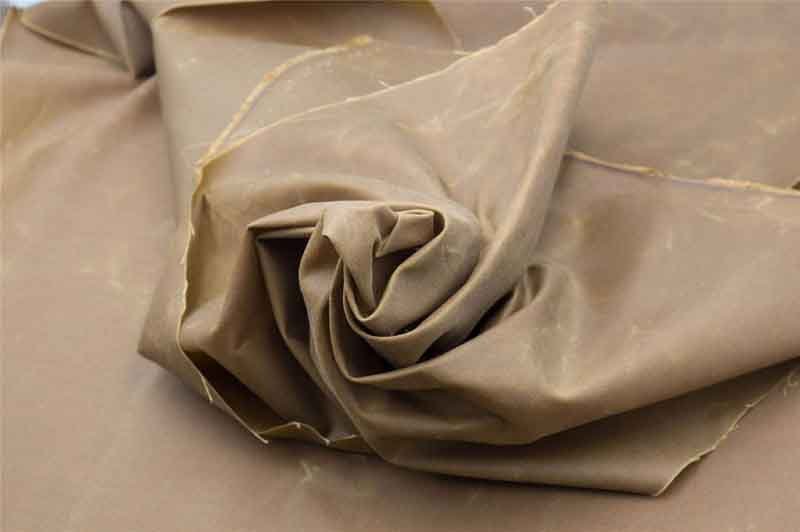
Nothing says “heritage” and “rugged” like waxed cotton—that classic fabric with a story in every crease. Born on English estates for hunting jackets and maritime sails, waxed cotton has migrated into bag making for its timeless look, decent water resistance, and ability to develop a rich patina over years of use.
Origins & Waxing Process
Original waxed cotton started with heavy cotton duck, treated with paraffin wax or beeswax blends. Modern methods often involve hot-melt wax coatings or cold waxing with specialized bar waxes. The wax seeps into weave interstices, creating a semi-breathable, water-shedding layer.
Performance Profile
- Weight & Feel: Typically 12–14 oz per square yard; initial hand is stiff and slightly tacky.
- Water Resistance: Excellent for light showers—water beads and runs off. In steady rain, outer wax may absorb over hours but still protects contents.
- Abrasion Resistance: Around 1,200 cycles before wear shows—comparable to mid-weight canvas with added water defense.
Why Waxed Cotton Works
- Vintage Aesthetic: The characteristic matte finish and waxed sheen blend classic charm with utilitarian edge.
- Patina Development: Scuffs and wrinkles reveal underlying fabric tones, adding character unique to each bag.
- Renewable Finish: A quick rub-down with a wax bar restores water repellency—no factory re-coating required.
Pros & Cons
| Advantages | Disadvantages |
|---|---|
| Weather-Ready: Perfect for field bags, weekenders, and moto-saddlebags where light rain is routine. | Heavy & Stiff: Wax can stiffen fibers and add weight—designers often combine with soft liners. |
| Low-Maintenance Re-waxing: Keep that protective layer strong with at-home wax bars—simple and cost-effective. | Heat Sensitivity: High temperatures (like a hot car) can soften wax, leaving a greasy film. |
| Distinct Patina: Users love that each scratch tells a story, making every bag uniquely personal. | Limited Breathability: Wax reduces airflow—condensation can occur inside on humid days. |
Applications & Brand Examples
- Messenger Bags: Filson’s Tin Cloth line pairs waxed cotton with leather straps for that outdoorsy flair.
- Weekend Duffles: Barbour and Belstaff craft travel bags that weather patina like vintage motorcycle jackets.
- Pannier Bags & Satchels: Brooks England’s waxed-canvas panniers bridge cycling and countryside style.
Care & Maintenance
- Re-wax Guide: Rub cleaned, dry fabric with a hot or cold wax bar in circular motions; heat lightly with a hairdryer to melt wax evenly.
- Spot Cleaning Only: Avoid water immersion—use a damp cloth. Full washes strip wax entirely.
- Storage Tips: Hang in a cool, dry place; folded creases can crack the wax finish over time.
Waxed cotton blends old-world charm with genuine functionality. If your brand narrative leans into heritage craftsmanship, outdoor adventure, or timeless style, waxed cotton bags carry that authentic patina through seasons and years—making them as much statement pieces as everyday workhorses.
13、Fire-Retardant Fabrics
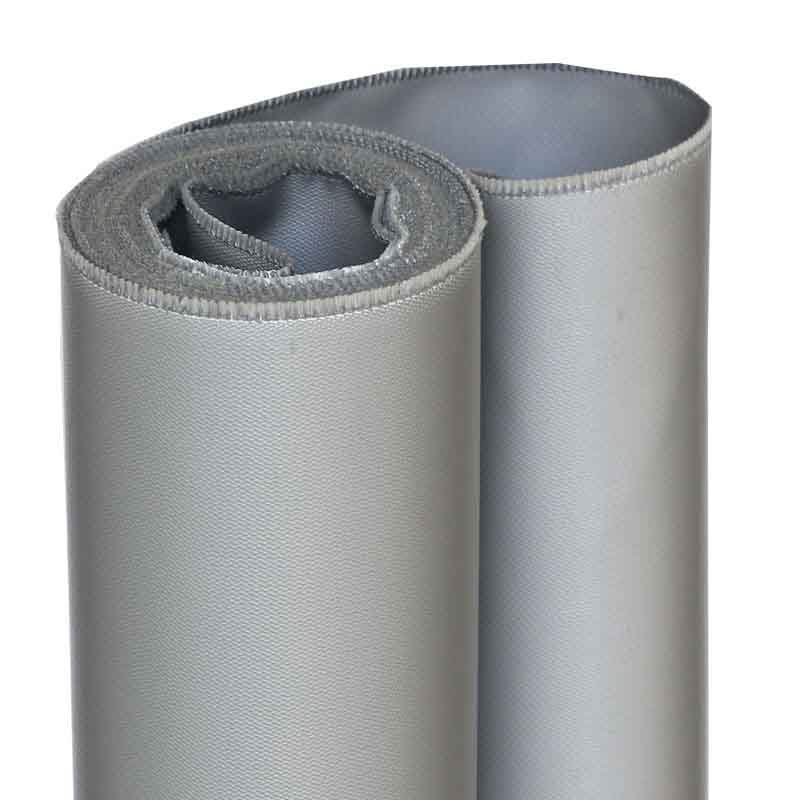
Whether you’re equipping firefighters, creating safety gear for industrial workers, or crafting specialized luggage for electrical engineers, fire-retardant (FR) fabrics provide a critical layer of protection. Designed to resist ignition, self-extinguish flames, and reduce heat transfer, these textiles keep users safer in high-risk environments.
Materials & Standards
Fire-resistant fabrics come in two main categories: inherently flame-resistant fibers (like aramids—Kevlar® and Nomex®) and chemically treated fibers (like FR-treated cotton or polyester). They’re rated under standards like NFPA 701 or ISO 6941, ensuring they self-extinguish within specified timeframes after a flame source is removed.
Performance Profile
- Flame Resistance: Inherent Fire-resistant fibers don’t melt or drip, and chemically treated fabrics char rather than ignite.
- Thermal Protection: Aramid blends can withstand brief exposures to temperatures over 400°F, delaying heat transfer to the wearer or contents.
- Durability & Comfort: Modern Fire-resistant weaves balance protection with breathability and abrasion resistance (~1,000 Taber cycles).
Why FR Fabrics Matter
- Safety First: Compliance with industry regulations—essential for professional uniforms, safety vests, and protective cases for electrical equipment.
- Self-Extinguishing: Fabrics engineered to smother flames almost instantly—critical in unexpected fire events.
- Chemical & Arc Protection: Kevlar® blends resist sparks and molten metal splash, making them staples in welding aprons and industrial bags.
Pros & Cons
| Advantages | Disadvantages |
|---|---|
| Essential for High-Risk Environments: From firefighting gear to tool bags for electricians, FR is non-negotiable for safety. | Stiffer Hand: Inherent FR fibers often feel rougher than standard fabrics without specialized finishes. |
| Regulatory Compliance: Fabrics meet strict NFPA, ISO, or OSHA standards—critical for liability and insurance. | Higher Cost: Specialty fibers like Nomex® and Kevlar® carry premium prices relative to cotton or nylon. |
| Long-Lasting Protection: Inherent FR properties don’t wash out; treated fabrics may need re-treatment after extended laundering. | Maintenance Needs: Treated cotton may lose FR finish over time—requires re-impregnation processes. |
Applications & Brand Examples
- Firefighter Gear Bags: Globe Manufacturing and Honeywell use Nomex®-based fabrics for turnout gear bags and rescue pouches.
- Arc Flash Safety Cases: Bulwark Fire-resistant deploys Kevlar®/modacrylic blends to make tool rolls for electricians.
- Industrial Tool Bags: Carhartt’s Fire-resistant line uses inherently safe fibers in rugged tote shapes.
Care & Maintenance
- Fire-resistant Treatment: Chemically treated fabrics need periodic re-treatment (every 10–20 washes) to maintain effectiveness; follow manufacturer guidelines.
- Wash Procedures: Use mild detergents; avoid bleach or fabric softeners that degrade FR properties.
- Inspection Regimen: Regularly check for wear, tears, or fraying that compromise flame resistance.
For brands serving firefighters, industrial workers, or anyone facing fire and arc risks, Fire-resistant fabrics aren’t optional—they’re lifesavers. By selecting the right aramid or FR-treated material and adhering to care protocols, you create bags and protective gear that meet strict safety standards while still delivering practical performance.
14、UV-Stabilized Fabrics
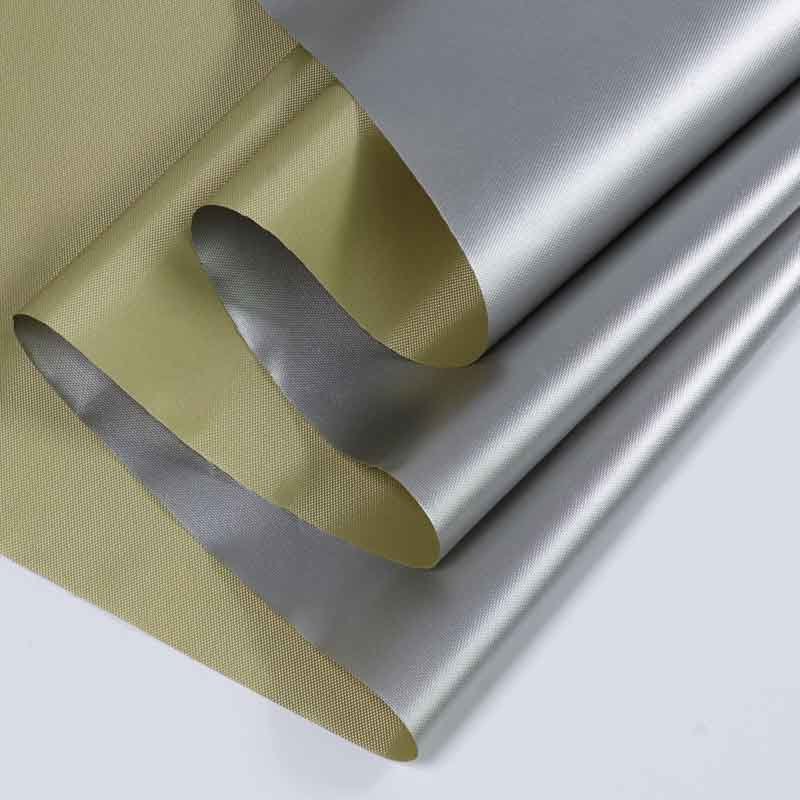
Nothing ages a bag faster than relentless sun exposure: faded colors, brittle fibers, and breakdown of coatings. UV-stabilized fabrics tackle this head-on by incorporating UV absorbers or light stabilizers into the polymer or coating, dramatically extending life under harsh sunlight—ideal for outdoor gear, beach bags, and any application where sun is a constant.
How UV Stabilizers Work
Ultraviolet light accelerates polymer degradation through photolysis—breaking molecular bonds and causing discoloration and weakening. UV stabilizers (like HALS—hindered amine light stabilizers—or UV absorbers) intercept these reactions, converting harmful rays into harmless heat or neutralizing free radicals before they damage the fiber.
Performance Profile
- Enhanced Longevity: UV-stabilized polyester or polypropylene can maintain >80% of tensile strength and color vibrancy after 1,000+ hours of accelerated UV testing.
- Abrasion & Tear: Maintains baseline abrasion life (~1,200 cycles) longer than untreated counterparts when exposed to sunlight.
- Colorfastness: Resists bleaching; outdoor patterns and logos stay crisp season after season.
Why UV Stabilization Matters
- Outdoor Durability: Beach gear, poolside totes, patio cushions, and rooftop commuter bags all benefit from UV resistance.
- Consistent Aesthetics: Brands avoid the “sun-bleached” look, preserving premium colorways and prints.
- Reduced Waste: Extending fabric life keeps bags out of landfills, aligning with sustainability goals.
Pros & Cons
| Advantages | Disadvantages |
|---|---|
| Sun-Proof Performance: Fabrics last 2–3× longer in direct sunlight—critical for coastal and desert use. | Incremental Cost: UV stabilizers add 5–15% to raw material costs, depending on concentration. |
| Color Retention: Logos and graphics stay vibrant for multiple seasons, crucial for brand appearance. | Not Bulletproof: Extreme UV (e.g., high-altitude exposure) still necessitates material rotation. |
| Low Maintenance: No special re-treatments—stabilizers are built into the polymer. | Limited to Polymer Fabrics: Natural fibers like cotton require separate coatings or treatments. |
Applications & Brand Examples
- Beach Totes & Chairs: Tommy Bahama and Sunday Afternoons use UV-stabilized polyester in surf-friendly bags.
- Outdoor Cushions & Slings: Sunbrella® fabric lines incorporate UV inhibitors for marine upholstery—adapted by some premium bag makers.
- Patio & Gardening Bags: Jo’s Gardener’s Tool Tote features UV-stabilized polypropylene for sun-exposed tool rolls.
Care & Maintenance
- Routine Wash: Mild soap and low-pressure rinse remove salt and chlorine that can strip stabilizers.
- Shade Storage: Even UV-stabilized fabrics benefit from intermittent shaded storage to maximize lifespan.
- Visual Inspections: Check for micro-cracking in printed areas—an early sign that UV protection is waning.
For any application where sun exposure is a daily event—beach season, poolside lounging, urban rooftop commutes—UV-stabilized fabrics offer a simple, built-in defense against fading and fiber breakdown. They preserve both function and form, ensuring your bags remain vibrant, strong, and waste-free for as long as possible.
How Do Eco-Friendly and Recycled Fabrics Stack Up?
Eco fabrics like RPET (recycled PET bottles), organic cotton, Piñatex® (pineapple leaf fiber), and cork leather offer sustainable credentials without major performance sacrifices. RPET nylon and polyester match virgin equivalents for strength and abrasion. Organic cotton requires GOTS certification. Piñatex® provides unique texture but lower tensile strength (~12 N). Cork is waterproof and light yet less abrasion-resistant.
Sustainability is now a design imperative. Let’s assess leading eco fabrics:
15、RPET Nylon & Polyester
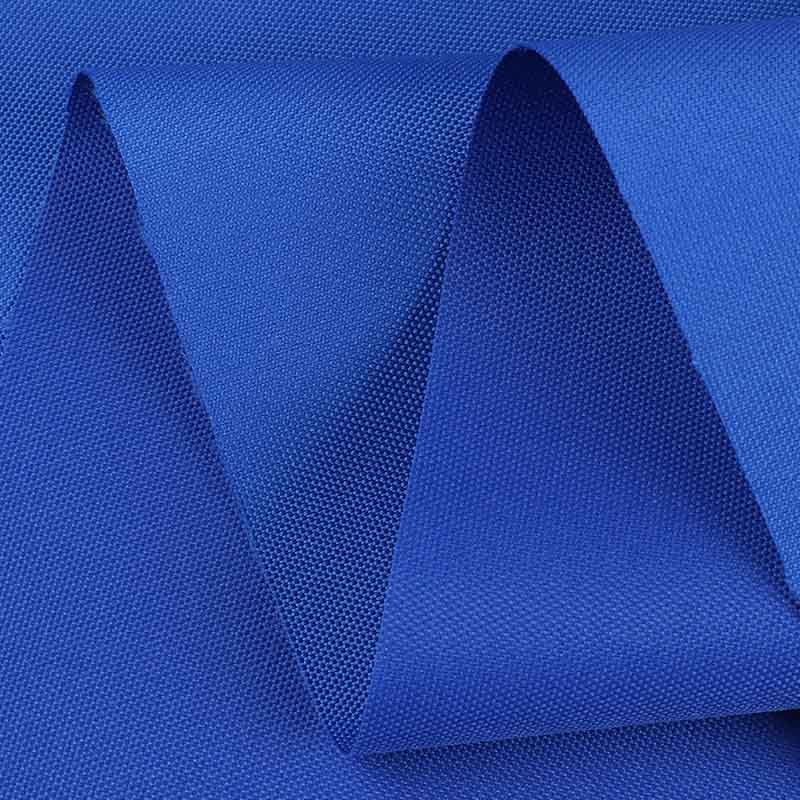
In a world gradually waking up to plastic pollution, RPET (Recycled Polyethylene Terephthalate) nylon and polyester stand out as eco-savvy alternatives to virgin synthetics. Imagine turning a mountain of used soda bottles into sturdy backpack panels or weekend duffels—that’s the magic of RPET. From outdoor brands to urban fashion labels, recycled synthetics let you match performance with environmental responsibility.
Origins & Manufacturing
RPET starts life literally in your recycling bin. Collected PET bottles are cleaned, shredded into flakes, then melted and re-extruded into yarn. That yarn is woven into fabrics—often matching the denier (thickness) and weave patterns of virgin 600D–1000D polyester or nylon. The result? A nearly identical performance profile with a significantly reduced carbon footprint.
Performance Profile
- Tensile Strength: Roughly 18–24 newtons—on par with virgin polyester, slightly lower than high-tenacity virgin nylon.
- Abrasion Resistance: Around 1,200–1,500 Taber cycles; excellent for daypacks, messenger bags, and gear pouches.
- UV & Moisture: Naturally hydrophobic (water rolls off) with optional DWR coatings. Colorfastness depends on dye method but often matches virgin options.
Why Brands Love RPET
- Sustainability Story: “Made from 10 recycled bottles” is a tagline that resonates with eco-conscious consumers.
- Performance Parity: You don’t have to sacrifice strength or appearance—RPET feels and behaves like its virgin counterpart.
- Marketing Edge: Highlighting bottle-to-bag transformations drives social media engagement and brand loyalty.
Pros & Cons
| Advantages | Disadvantages |
|---|---|
| Up to 50% Lower Carbon Footprint: Compared to virgin PET production. | Slight Performance Variance: May have minor differences in hand feel or tensile strength. |
| Affordable Eco Upgrade: Costs typically run 5–10% above virgin, still very competitive. | Limited Availability: High demands can outpace supply of quality post-consumer feedstock. |
| Versatile & Customizable: Accepts same DWR finishes, prints, and laminations as virgin fabrics. | Recycled Content Threshold: Claims often capped at 50–100% RPET—fully recycled blends can be premium. |
Applications & Brand Examples
- The North Face’s Recycled Nuptse Pack: Uses 100% RPET polyester shell for a puff-inspired commuter bag.
- Patagonia Refugito Pack: Features an RPET exterior combined with bluesign® approvals for low-impact water repellency.
- Everlane ReNew Line: Their weekender bags boast 100% recycled polyester canvas, reinforcing circular-fashion credentials.
Care & Maintenance
- Machine Wash Cold: Use gentle detergents to protect DWR coatings.
- Air Dry: Minimizes shrinkage and preserves fiber integrity.
- Reproof as Needed: After multiple washes, reapply DWR spray to maintain water-beading performance.
For brands seeking to reduce plastic waste and carbon emissions without compromising product quality, RPET nylon and polyester offer a no-brainer solution. They deliver the same color stability, tear resistance, and water repellency of virgin fabrics, all while telling a powerful environmental story—an ideal match for modern consumers who buy with their values as much as their wallets.
16、Organic Cotton
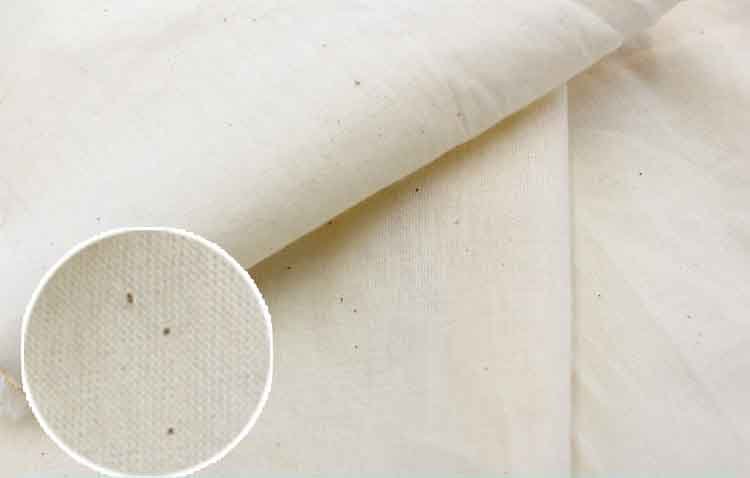
When you hear “organic cotton,” think of the softest, most responsibly grown fabric in the bag world—cotton that sprouts without synthetic pesticides, chemical fertilizers, or GMO seeds. Organic cotton bags feel as good as they look, offering a tactile warmth and breathability that synthetics can’t match, while treading lightly on the planet.
Origins & Growing Practices
Organic cotton farms abide by the Global Organic Textile Standard (GOTS) or USDA Organic guidelines. That means no toxic agrochemicals, mandatory crop rotation to preserve soil health, and fair labor practices. Harvested fibers are gin-cleaned without chlorine bleaching, then spun into yarn that’s both eco-friendly and consumer-friendly.
Performance Profile
- Weight & Weave: Commonly 8–12 oz per square yard for bag fabrics—similar heft to mid-weight canvas.
- Tensile & Abrasion: Tensile ~18–20 newtons; abrasion resistance around 1,000–1,200 Taber cycles—good for everyday totes and light duffels.
- Breathability & Hand Feel: Exceptionally breathable, with a soft, warm hand that invites touch.
Why Organic Cotton Shines
- Chemical-Free Comfort: Ideal for sensitive skin—no residue of synthetic chemicals remains in the final product.
- Soft Break-In: Bags soften and drape gracefully over time, molding to each user’s habits.
- Traceable Supply Chain: Certifications allow brands to back up eco-claims with rigorous audits.
Pros & Cons
| Advantages | Disadvantages |
|---|---|
| Eco-Friendly: Reduced water and soil impact, no pesticide runoff. | Water Resistance Required: Needs DWR or natural wax treatments to fend off moisture. |
| Premium Hand Feel: Soft, inviting textures—perfect for fashion totes and urban carryalls. | Moderate Durability: Less abrasion resistant than high-denier synthetics; best for light-to-medium use. |
| Biodegradable: Returns to the earth more cleanly than synthetics—key for circular-fashion initiatives. | Higher Price Point: ~20–30% cost premium over conventional cotton; GOTS certification adds overhead. |
Applications & Brand Examples
- Everlane Organic Canvas Tote: Uses GOTS-certified cotton for minimalist shopper bags—marketing transparency at its finest.
- Patagonia Market Tote: Blends organic cotton with organic hemp for market-friendly weekenders.
- Baggu Standard Reusable Bag: In addition to ripstop nylon, their Organic Cotton iteration appeals to grocery-run minimalists.
Care & Maintenance
- Gentle Wash: Cold water with mild detergent; skip bleach.
- Line Dry: Minimizes shrinkage and preserves fiber softness.
- Reapply DWR: If you treat it for water resistance, reproof every 6–12 months.
Organic cotton offers a balanced blend of comfort, sustainability, and style. It’s not the bulletproof bag material for heavy loads, but in applications where feel, eco-credentials, and moderate durability reign supreme—like fashion totes, market bags, and light weekenders—organic cotton bags win hearts and keep the planet happier.
17、Piñatex® (Pineapple Leather)
Imagine turning fruit farming byproducts into a next-generation leather alternative—that’s Piñatex®, an innovative material spun from pineapple leaf fibers. Developed in 2015 by Dr. Carmen Hijosa, Piñatex® sidesteps animal hides while delivering a textured finish reminiscent of genuine leather. It’s vegan, eco-friendly, and showcases circular-economy ingenuity.
Origins & Production
Piñatex® fibers are extracted from pineapple leaves, a waste byproduct of pineapple agriculture. Leaves are decorticated (fibers separated), then treated and felted into pre-pulp sheets. These sheets are bonded to a PET (polyethylene terephthalate) or bio-based PU backing, creating a thin, flexible textile—usually around 0.8–1.0 mm thick.
Performance Profile
- Tensile Strength: Approximately 12–15 newtons—lower than full- or top-grain leather but sufficient for accessories and light-use bags.
- Abrasion Resistance: Around 800–900 Taber cycles—enough for clutches, wallets, and fashion-forward handbags.
- Surface Texture: Unique natural grain pattern with subtle scale-like motifs; holds vibrant dyes and metallic finishes well.
Why Designers Embrace Piñatex®
- Vegan Credentials: Provides leather-like appeal without animal products—critical for cruelty-free and vegan markets.
- Waste Valorization: Transforms pineapple leaf waste into high-value materials, reducing agricultural burning and landfilling.
- Customizable Look: Surface accepts embossing, laser etching, and foil stamping—enabling unique brand detailing.
Pros & Cons
| Advantages | Disadvantages |
|---|---|
| Uniquely Textured: Natural grain patterns differ batch-to-batch, adding artisanal flair. | Moderate Durability: Not for heavy straps or high-wear base panels—best for decorative or light-duty pieces. |
| Eco & Social Impact: Supports rural employment in pineapple regions; reduces biomass waste. | Cost & Supply Chain: Limited scale means pricing can be higher than mass-produced synthetics. |
| Heat Sealable Backing: PET or bio-PU layers enable simplified heat lamination in assembly. | Water Sensitivity: Surface finishes need extra coating to achieve full water repellency. |
Applications & Brand Examples
- VEERAH Purses: Vegan luxury brand using Piñatex® for sleek, sustainable evening bags.
- Pinatex × H&M Conscious Edit: Highlighted as a key eco innovation in a major fast-fashion collaboration.
- Local Artisans: Many small handbag designers experiment with Piñatex® for limited-edition vegan collections.
Care & Maintenance
- Spot Clean Only: A damp cloth and mild soap—no machine washing or harsh solvents.
- Condition Sparingly: Specialized vegan “leather” conditioners maintain suppleness without harming backing.
- Store Away from Heat: High temperatures can soften or distort PU layers.
Piñatex® isn’t a 1:1 leather replacement for all applications, but its story and surface appeal carve out a unique niche in eco-conscious fashion. When brands want an authentic leather alternative that sparks conversation—and supports circular agriculture—Piñatex® shines as a pioneering choice.
18、Cork Fabrics
Cork fabric brings an earthy, tactile twist to bag making—harvesting the bark of cork oak trees without felling them, then transforming thin bark sheets into flexible, vegan-friendly, and water-resistant textiles. Lightweight and hypoallergenic, cork fabric merges natural charm with modern performance.
Origins & Harvesting
Cork oak trees (Quercus suber) thrive in Mediterranean climates. Every 9–12 years, growers strip the bark by hand—a process that doesn’t harm the tree. The bark regenerates, making cork a renewable resource. Harvested cork is boiled, flattened, and adhered to cotton or polyester backings, producing a thin (0.5–1.2 mm) textile.
Performance Profile
- Weight: Exceptionally light—around 4–6 oz per square yard.
- Water Resistance: Naturally hydrophobic: spills bead off instantly.
- Abrasion Resistance: Roughly 700–900 Taber cycles—adequate for wallets, small pouches, and light totes.
Why Cork Fabric Captures Hearts
- Vegan & Sustainable: No animals harmed; trees live on for centuries, storing CO₂.
- Unique Aesthetic: Subtle mottled patterns and soft matte finish—no two panels are identical.
- Hypoallergenic & Antimicrobial: Ideal for sensitive skins and items like cosmetic bags.
Pros & Cons
| Advantages | Disadvantages |
|---|---|
| Ultra-Lightweight: Perfect for travel pouches and minimalistic accessories. | Low Abrasion Life: Not suited for heavy-duty bags or high-wear corners—best on small items. |
| Natural Water Repellency: No coatings needed—ideal for makeup bags or tech sleeves. | Limited Stitching: Dense cork grain requires precise sewing techniques—avoid excessive needle punctures. |
| Sustainable Story: Cork forests support biodiversity and prevent soil erosion. | Pliable Only: Lacks structural strength—needs sturdy backers or frames for larger bag constructions. |
Applications & Brand Examples
- Corkor Wallets & Purses: Leading brand making vegan cork wallets, clutches, and pouches.
- Materiom’s Cork Backpacks: Experimental collections blending cork panels with fabric for unique backpacks.
- Local Artisans: Many Etsy makers craft cork coin purses and cardholders as eco-friendly alternatives.
Care & Maintenance
- Gentle Wipe Clean: Soft damp cloth; avoid alcohol-based solvents.
- Avoid Excessive Heat: Direct sunlight over time can dry cork, making it brittle.
- Condition with Cork Oil: Periodic application of cork-specific oil keeps fibers supple.
Cork fabric isn’t your go-to for hauling heavy textbooks, but when you need a lightweight, vegan, and water-resistant solution—with a natural story that resonates—cork brings unmatched eco-chic charisma. Think small wallets, phone sleeves, and cosmetic pouches that stand out while treading softly on the planet.
How Do You Choose the Right Fabric for Your Bag Design?
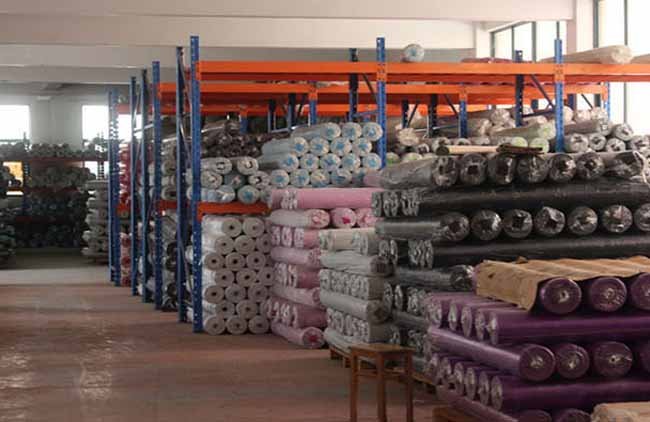
Match fabric properties—tensile strength, abrasion life, weight, water resistance, cost—to your bag’s function and style. Use natural fibers for casual aesthetics, synthetics for performance, technical fabrics for niche needs, and eco-materials for green branding. Consider lining fabric (nylon taffeta or polyester twill) for interior durability. Balance budget, MOQ, and customization options like prints or coatings.
A structured decision matrix helps streamline selection:
| Application | Recommended Fabrics | Lining Options | Key Criteria |
|---|---|---|---|
| Everyday Tote | 12 oz Cotton Canvas, Waxed Cotton | Polyester twill | Aesthetics, cost |
| Outdoor Backpack | 1000D Cordura®, Ripstop Nylon | Nylon taffeta | Durability, weight, water |
| Luxury Handbag | Top-Grain Leather, Linen | Silk blend | Premium look, patina |
| Tech Sleeve | Neoprene, 600D Polyester | Microfiber | Cushioning, aesthetics |
| Cooler Bag | PVC-Coated Polyester, Neoprene | TPU laminate | Waterproof, insulation |
| Eco-Friendly Tote | RPET Canvas, Organic Cotton, Piñatex® | Organic cotton twill | Sustainability, branding |
| Fireproof Bag | Aramid blend, FR-treated canvas | Fire-retardant lining | Compliance, safety |
Decision Framework:
- List functional needs: Weight, water resistance, abrasion.
- Rank aesthetics vs. performance: Prioritize visuals for fashion lines, toughness for technical lines.
- Set budget & MOQ constraints: Determine if eco or exotic fabrics fit cost.
- Prototype & test: Order small runs, conduct field tests (abrasion drums, water spray).
- Finalize finish treatments: DWR, PU lamination, wax coatings as needed.
Conclusion
Selecting the perfect fabric—natural, synthetic, technical, or sustainable—is foundational to creating bags that delight users and stand the test of time. By understanding tensile strength, abrasion resistance, weight, water repellency, and environmental impact, you can match material to function and style.
Ready to source the right fabrics and bring your custom bag designs to life? Szoneier offers turnkey OEM/ODM services with low MOQs, rapid sampling, and a vast material library—from 1000D Cordura® to organic canvas. Contact us today to discuss your project and request free samples.

